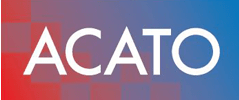A Guide to ISO Certification for the Automotive Industry

Navigating ISO Certification for the Automotive Industry: A Clear Guide to the Certification Process
Introduction
Automotive manufacturers face intricate requirements when pursuing ISO certification, and the iso certification process for automotive industry can feel overwhelming without expert guidance. This guide clarifies core standards, outlines each certification phase, and advises on selecting the ideal certification body. Readers will learn: 1) Key ISO benchmarks for quality, environment, safety and cybersecurity; 2) Step-by-step certification phases from planning to surveillance; 3) Criteria for choosing accredited partners; 4) Benefits, challenges and evolving trends in electric vehicles and digital transformation. By simplifying complexity, this article builds a roadmap for automotive teams to streamline compliance and boost market competitiveness.
What Are the Key ISO Standards for the Automotive Industry?

As the foundation of global automotive quality management, ISO standards define requirements that drive consistency, reduce defects and support regulatory compliance across production and supply chains.
What Is IATF 16949 and Why Is It Essential for Automotive Quality?
IATF 16949 is the specialized quality management system (QMS) standard designed for automotive production and service parts organizations. It builds upon ISO 9001 by adding customer-specific requirements and core tools such as APQP, FMEA and PPAP to prevent defects and enhance supplier performance. For example, FMEA analysis under IATF 16949 systematically identifies failure modes, preventing costly recalls and supporting zero-defect objectives in tier 1 and tier 2 operations.
IATF 16949 and Automotive Quality
IATF 16949 is a specialized quality management system (QMS) standard designed for automotive production and service parts organizations, building upon ISO 9001 by adding customer-specific requirements and core tools to prevent defects and enhance supplier performance.
IATF 16949
This standard is a globally recognized standard for the automotive industry, emphasizing defect prevention and the reduction of variation and waste in the supply chain.
How Does ISO 9001 Support Automotive Quality Management Systems?
ISO 9001 establishes a generic QMS framework that emphasizes process control, continuous improvement and customer satisfaction. By implementing ISO 9001, automotive companies formalize document control, management review and corrective action processes. This structure enables compatibility with IATF 16949 and ensures that quality policies cascade through design, manufacturing and service functions.
ISO 9001 and Automotive Quality Management Systems
ISO 9001 establishes a generic QMS framework that emphasizes process control, continuous improvement, and customer satisfaction, enabling compatibility with IATF 16949 and ensuring that quality policies cascade through design, manufacturing, and service functions.
ISO 9001
Implementing ISO 9001 helps automotive companies formalize document control, management review, and corrective action processes.
What Roles Do ISO 14001, ISO 45001, and ISO 27001 Play in Automotive Compliance?
The automotive sector integrates multiple management systems to address environmental, health and security concerns.
- ISO 14001 drives environmental performance by mandating pollution prevention and resource efficiency.
- ISO 45001 enhances worker safety through hazard identification and risk mitigation processes.
- ISO 27001 protects digital assets by enforcing information security controls and incident response procedures.
Together, these standards foster sustainable manufacturing, safeguard employee welfare and secure intellectual property. Integrating them with an existing QMS accelerates holistic compliance.
ISO 14001, ISO 45001, and ISO 27001 in Automotive Compliance
The automotive sector integrates multiple management systems to address environmental, health, and security concerns, with ISO 14001 driving environmental performance, ISO 45001 enhancing worker safety, and ISO 27001 protecting digital assets.
ISO 14001, ISO 45001, and ISO 27001
These standards foster sustainable manufacturing, safeguard employee welfare, and secure intellectual property, integrating with an existing QMS to accelerate holistic compliance.
What Are the Step-by-Step Phases in the ISO Certification Process for Automotive Companies?

How to Prepare and Plan for Automotive ISO Certification?
Effective preparation begins with a gap analysis to compare current practices against standard requirements, followed by defining the certification scope and assembling a cross-functional team. Core tasks include:
- Documenting existing processes for design, production and service.
- Identifying resource needs such as training, software and infrastructure.
- Creating a project timeline with milestones for policy approval, procedure drafting and first internal audit.
A clear roadmap minimizes delays and aligns stakeholders before formal implementation.
What Happens During Implementation and Training for ISO in Automotive?
During implementation, organizations translate standard clauses into operational procedures, develop work instructions and integrate documentation into daily workflows. Employees undergo tailored training on QMS principles, core tools (e.g., APQP) and audit readiness. Concurrent internal audits validate process conformity and reveal non-conformities, guiding corrective actions. This stage ensures the system operates effectively before inviting external assessment.
How Are Certification Audits Conducted and Maintained in Automotive?
Certification bodies perform a two-stage audit:
- Stage 1 evaluates documentation completeness and readiness.
- Stage 2 conducts on-site verification of process execution, interviewing staff and sampling records.
Non-conformities identified during Stage 2 demand root-cause analysis and corrective measures. Once certified, organizations undergo annual surveillance audits and periodic recertification every three years to demonstrate ongoing compliance and drive continuous improvement.
How Do You Choose the Right Certification Body for Automotive ISO Certification?
Choosing the right certification body for automotive ISO certification is a critical step for companies seeking to enhance their operational credibility and market competitiveness. The process begins with evaluating the recognition and credibility of potential certification bodies. It is essential to choose organisations that are accredited by recognised authorities, such as the UKAS (United Kingdom Accreditation Service), as this ensures that they meet international standards and are competent to perform certification audits. Additionally, considering the specific qualifications and expertise of the auditors is crucial. Certification bodies with auditors who have extensive experience and knowledge in the automotive sector can provide deeper insights and a more rigorous assessment of compliance with ISO standards.
Furthermore, businesses should assess the certification body’s reputation within the industry. This can often be determined by seeking testimonials or feedback from other organisations that have undergone certification with them. A body that offers prompt communication, clear processes, and ongoing support can significantly enhance the certification experience. It is also advisable to inquire about the body’s approach to continuous assessment and surveillance audits, as these elements contribute to maintaining standards over time. Ultimately, selecting the right certification body goes beyond mere compliance; it involves finding a partner that can support the organisation’s growth and drive improvements in quality and efficiency within the automotive industry.
What Accreditation and Expertise Should Certification Bodies Have?
A valid accreditation from a recognized authority (e.g., UKAS, ANAB) confirms a certification body’s impartiality and competence. Automotive experience is essential; auditors should understand sector-specific requirements like customer-specific requirements (CSRs) and core tools. This combination of accreditation and domain expertise ensures reliable audits and minimizes rework.
How to Evaluate Auditor Competence and Automotive Industry Experience?
Assess auditor credentials by reviewing their automotive training, sector affiliations and past project portfolios. Look for auditors certified in IATF 16949 interpretation and those who have conducted audits across OEM and supplier tiers. Detailed questionnaires and sample audit reports should be requested to verify methodological rigor and ensure alignment with organizational objectives. For an in-depth guide to this selection process, explore ISO 9001 certification bodies.
What Are the Benefits and Common Challenges of ISO Certification in the Automotive Industry?
ISO certification in the automotive industry is widely recognised for its potential to enhance organisational efficiency, improve product quality, and elevate customer satisfaction. One of the primary benefits of obtaining ISO certification, such as ISO 9001 or IATF 16949, is that it provides a structured approach to quality management. This framework encourages continuous improvement, enabling companies to streamline their processes and reduce waste. As a result, organisations often see a significant boost in operational performance, which can lead to cost savings and increased profitability. Furthermore, achieving ISO certification can bolster a company’s reputation in a highly competitive market, signalling to clients and stakeholders that it adheres to internationally accepted standards of excellence.
However, the journey towards ISO certification is not without its challenges. Companies in the automotive sector may encounter obstacles such as the need for comprehensive training and change management, which can be both time-consuming and resource-intensive. Additionally, the process of aligning existing procedures with ISO standards often requires a cultural shift within the organisation, involving the commitment and buy-in from all employees. Ensuring compliance with ISO standards might also necessitate investments in new technologies or systems, which can strain financial resources—especially for smaller manufacturers. Despite these hurdles, the long-term advantages of ISO certification often outweigh the initial challenges, making it a worthwhile pursuit for organisations aiming to thrive in the automotive industry.
What Tangible Benefits Do Automotive Manufacturers and Suppliers Gain?
Key benefits include:
- Enhanced product quality through defect prevention and statistical control.
- Improved market access and customer confidence by meeting OEM requirements.
- Operational efficiency gains via standardized processes and reduced rework.
- Strengthened supplier relationships through transparent performance metrics.
- Regulatory compliance and reduced liability in safety and environmental domains.
These improvements boost competitiveness and support sustainable growth.
What Are Common Challenges in Automotive ISO Implementation and How to Overcome Them?
Resistance to process change, limited internal expertise and resource constraints can impede certification efforts. To overcome these challenges:
- Allocate dedicated resources and timeline buffers for training and documentation.
- Foster a quality culture by engaging leadership and frontline teams through workshops.
- Leverage external consultants for technical interpretation and audit readiness.
Proactive communication and continuous monitoring of KPIs ensure the system matures and delivers long-term value.
How Is ISO Certification Evolving with Emerging Automotive Technologies?
The evolution of ISO certification in the automotive sector is closely intertwined with the rapid advancement of emerging technologies, such as electric vehicles (EVs), autonomous driving systems, and connected vehicle platforms. As the automotive landscape undergoes a significant transformation, ISO standards are being adapted to ensure they remain relevant and effective in overseeing the integration and implementation of these innovations. This shift reflects a broader understanding that traditional quality management systems must evolve to accommodate the complexities and safety challenges posed by new technologies. As a result, ISO standards are becoming more flexible and responsive, facilitating a smoother transition for manufacturers as they integrate cutting-edge practices into their operations.
In parallel, the growing emphasis on sustainability and environmental responsibility has prompted ISO to focus on standards that support greener manufacturing processes and practices. This includes certifications that address lifecycle assessments of automotive products, eco-design principles, and energy efficiency measures, which are increasingly vital in the context of global climate concerns. By aligning with ISO certification, automotive companies not only enhance their credibility but also demonstrate a commitment to innovation and sustainability, thereby improving their competitive edge in an ever-evolving market. As such, the intersection of ISO certification and emerging automotive technologies is not just about compliance; it is about fostering a culture of continuous improvement and adaptation, ensuring that the automotive industry meets the demands of the modern consumer while upholding the highest standards of safety and quality.
How Do ISO Standards Apply to Electric Vehicles and Autonomous Driving?
ISO 26262 for functional safety and ISO/SAE 21434 for cybersecurity join core standards in electric and autonomous architectures.
ISO 26262 and Functional Safety
ISO 26262 is an international standard for automotive functional safety, providing guidelines for the safe design and development of electrical and/or electronic (E/E) systems in road vehicles, aiming to minimize the risk of accidents.
ISO 26262
The standard addresses the entire safety lifecycle of automotive electronic and electrical systems, providing a single point of reference for manufacturers and suppliers to ensure robust safety management. These specialized frameworks address risk assessment in electronic systems, software validation, and secure communication protocols, ensuring reliability in battery management, sensor networks and autonomous control features.
ISO 21434 and Cybersecurity
ISO/SAE 21434 specifies engineering requirements for cybersecurity risk management in road vehicles, aiming to reduce the risk of cyberattacks by embedding cybersecurity best practices in the automotive industry.
ISO/SAE 21434
This standard provides a framework for developing a cybersecurity management system that includes processes for risk assessment, treatment, monitoring, and review.
What Is the Role of ISO in Automotive Supply Chain and Digital Transformation?
Industry 4.0 integration leverages ISO 9001 and ISO 27001 to formalize data integrity, traceability and real-time monitoring. Standards guide the use of IoT sensors, digital twin models and cloud-based QMS platforms, enabling transparent supply chain collaboration and predictive quality management powered by analytics.
As automotive manufacturers and suppliers navigate the complexities of ISO certification, a clear understanding of standards, structured implementation and strategic partner selection become essential. Engaging accredited bodies with proven automotive expertise and investing in robust QMS training ensures that quality systems deliver sustained performance improvements. Organizations ready to integrate emerging technologies will secure competitive advantage in electric and autonomous markets. To streamline your certification journey, consider partnering with experienced consultants for tailored guidance and audit readiness support.

